Key takeaways:
- Light significantly impacts mood and storytelling in photography, with different qualities (hard vs. soft) and types (natural vs. artificial) offering diverse effects.
- Experimenting with various lighting techniques, such as backlighting, reflectors, and modifiers, can drastically enhance the visual appeal of photographs.
- Natural light, especially during golden hour, creates authentic and intimate images, while artificial light can introduce creativity and vibrancy through color and control.
- Sharing and reflecting on light experiments encourages growth and discovery in photography, highlighting the transformative power of light on subjects and scenes.
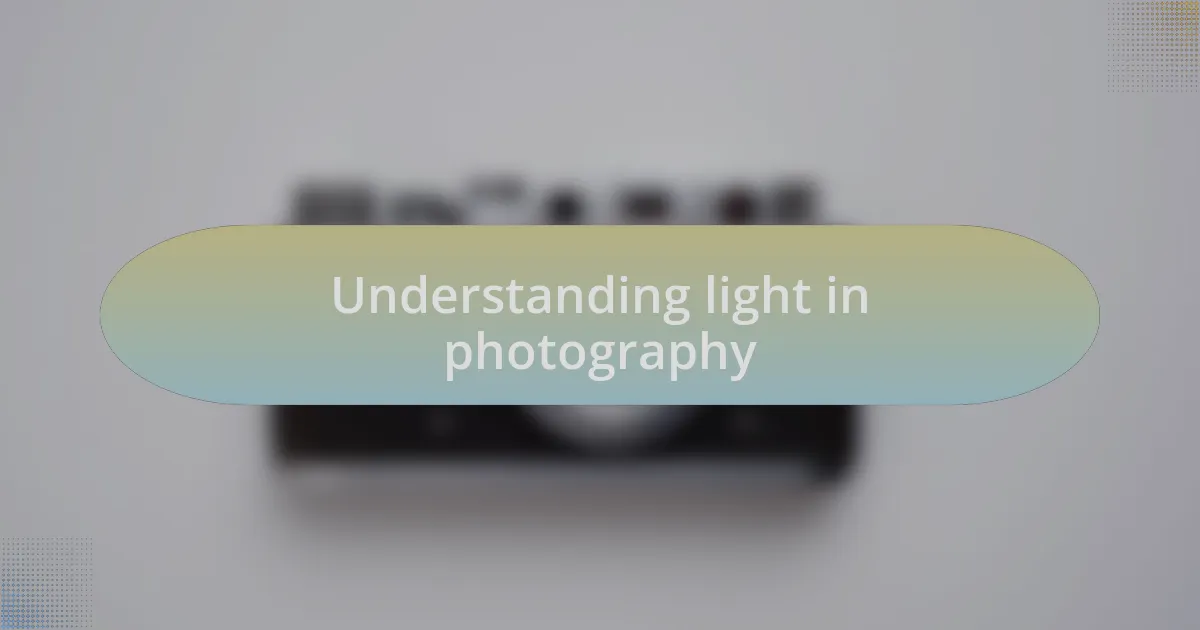
Understanding light in photography
Light is the essence of photography; it’s what transforms a scene into a work of art. I remember my early days with a camera, feeling almost overwhelmed by how different light sources could completely change the mood of a photograph. Have you ever considered how a single ray of sunlight can evoke warmth, while shadowy corners create an air of mystery?
The quality of light—whether hard or soft—plays a critical role in your image. I often find myself experimenting with natural light during golden hour, where that soft glow can give even the simplest subject an ethereal feel. Isn’t it fascinating how the same scene can tell different stories depending solely on its lighting?
Moreover, understanding how to manipulate light allows you to be more intentional in your work. For instance, I’ve tried using reflectors to bounce light back onto a subject, transforming an otherwise flat image into something vibrant and dynamic. When you delve into the intricacies of light, you’ll discover endless possibilities for creativity. What lighting techniques have you found to be most effective in your own photography journey?
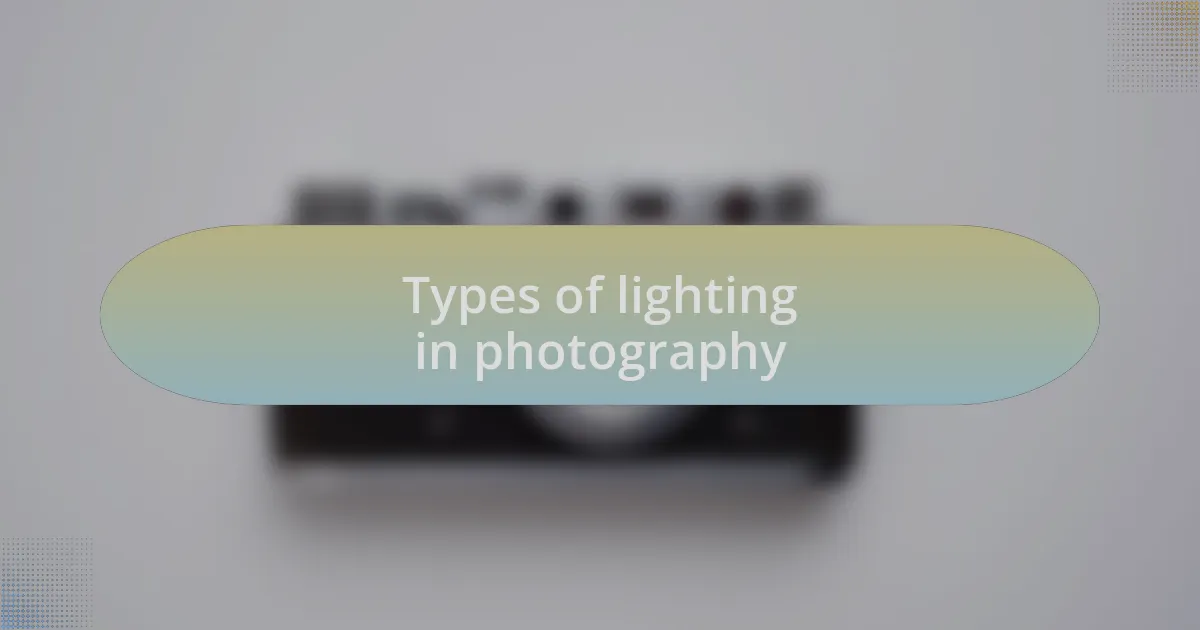
Types of lighting in photography
Light in photography comes in various forms, each with its unique characteristics and effects. Think about natural light versus artificial light; I remember one photo shoot where I switched from the harsh midday sun to the softer glow of twilight. The difference was stark—suddenly, the colors felt more vibrant, and the composition took on a life of its own. Have you explored how different times of the day impact your photographs?
Strobe lighting is another fascinating option. I once experimented with studio strobes for a portrait session. The ability to create dramatic shadows and highlights transformed the subject completely, adding depth and personality. It’s incredible how altering the intensity and direction of light can evoke various emotions—what kind of stories do you want your images to tell?
Then there’s backlighting, a technique I adore. One evening, while photographing a friend backlit by the setting sun, I captured a halo effect around her silhouette that added a magical touch. This method often requires patience, but the results can be breathtaking. Have you considered how you might harness backlighting to enhance your own projects?
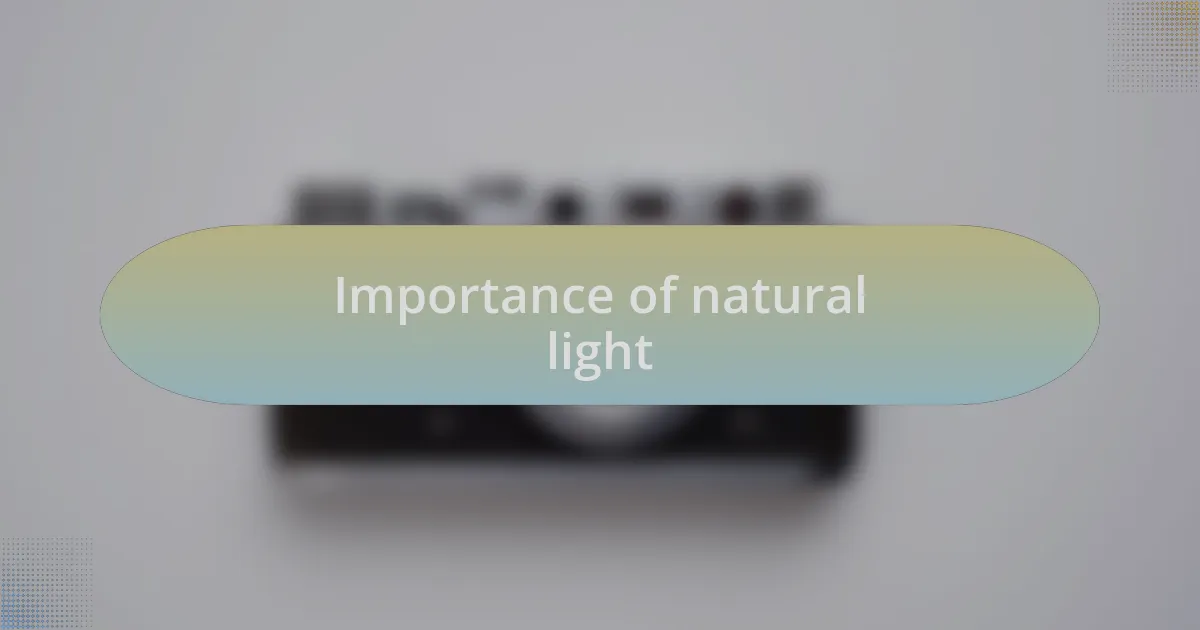
Importance of natural light
Natural light is a powerful element in photography that can dramatically influence the mood and tone of an image. I’ll never forget a moment when I was shooting a landscape at sunrise. The soft, golden hues filtering through the trees created an ethereal atmosphere that my camera lens captured beautifully. Have you felt the magic of golden hour in your own photography?
Working with natural light often requires an understanding of its changing qualities throughout the day. For instance, I once tried to chase that “perfect” sunlight during a beach shoot. As the clouds rolled in unexpectedly, the diffused light transformed harsh shadows into gentle gradients, which added a dreamlike quality to my photos. It taught me to embrace the unpredictable nature of natural light—how do you adapt when conditions aren’t ideal?
There’s something inherently authentic about using natural light. During a candid family gathering, I relied solely on available light streaming through the windows. The way it illuminated genuine emotions on my loved ones’ faces brought a sense of intimacy to the images. Have you considered how natural light can enhance the authenticity in your photography, capturing not just the scene but the essence of the moment?
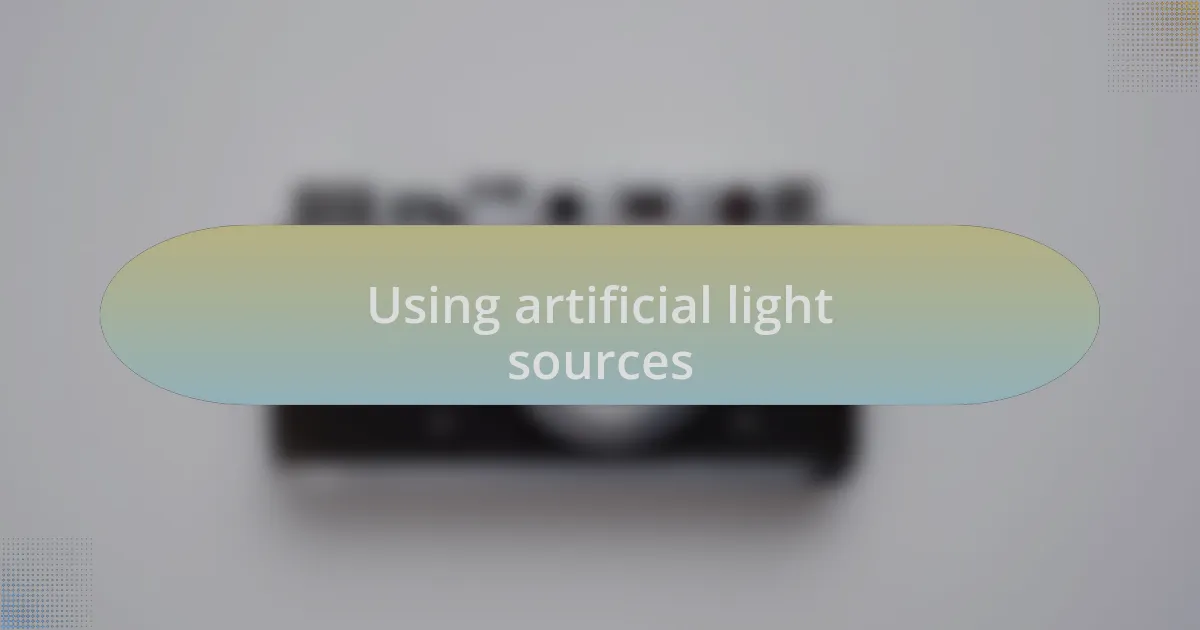
Using artificial light sources
Using artificial light sources can open up a whole new dimension in your photography. I remember a night shoot when I experimented with a softbox for the first time. The way it diffused light created a soft, flattering effect on my subject’s face, illuminating features that would have been lost in the shadows. Have you considered how different types of artificial lighting, like LED panels or flash units, could transform your own shots?
One evening, while working on a portrait series, I relied exclusively on a ring light. Its even illumination produced mesmerizing catchlights in my subject’s eyes, adding a sparkle that brought the portraits to life. This experience taught me that not all artificial light is created equal; each type has its unique characteristics that can dramatically affect the mood. How do you choose your light sources to convey the emotion you want in your images?
When I started experimenting with colored gels on studio lights, I discovered the ability to create vibrant atmospheres. One particular shoot where I used a blue gel to mimic a nighttime vibe resulted in striking images that felt both energetic and moody. It’s fascinating how artificial light can not only enhance visibility but also contribute to the narrative of your photographs. Have you explored color and creativity in your lighting strategies?
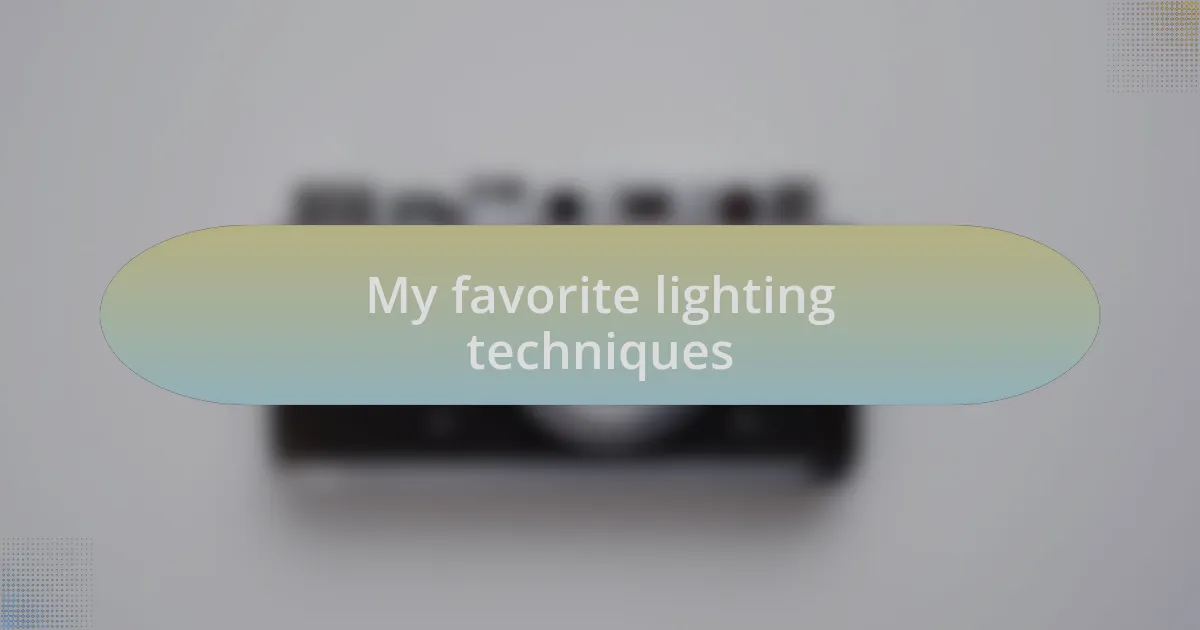
My favorite lighting techniques
I have always been drawn to backlighting, especially during sunset when the golden hour creates magic. I remember one specific shoot where I positioned my subject in front of the setting sun. The glow around them added an ethereal quality that highlighted their silhouette beautifully. Have you ever tried backlighting? It can create such dramatic and enchanting effects if done correctly.
Another technique I cherish is using natural reflectors. On a recent project, I found a large white wall that acted as a perfect bounce for sunlight. By positioning my subject a few feet away, the soft, diffused light wrapped around them, reducing harsh shadows and resulting in a pleasing even glow. It’s incredible how everyday objects can enhance your lighting. Have you ever taken advantage of your surroundings like this?
I am also a fan of experimenting with high contrast lighting. There was a moment when I deliberately used harsh, directional light to create striking shadows for a fashion shoot. This technique added depth and intensity, emphasizing textures and patterns in the clothing. It was a bold choice, and I loved how it transformed the ordinary into something extraordinary. Do you ever take risks with your lighting choices to push your creative limits?
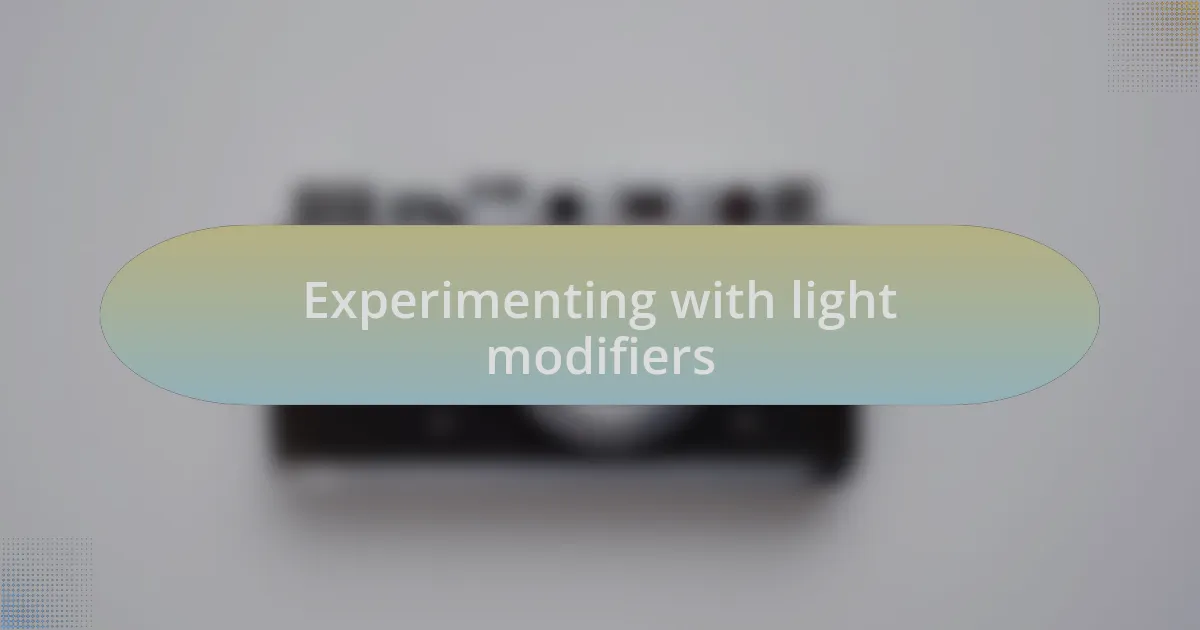
Experimenting with light modifiers
Experimenting with light modifiers has become an exciting part of my photography journey. I remember the first time I used a softbox during a portrait session. The difference was remarkable; the harsh sunlight transformed into a gentle, flattering glow that embraced my subject’s features. Have you ever noticed how a simple modifier can completely change the mood of your images?
I often play around with reflectors, and one session stands out in my memory. I had a trusty gold reflector that brought warmth to my subjects’ skin tones during a midday shoot. As soon as I angled it just right, the light bounced back, adding a radiant touch that instantly elevated the images. Isn’t it fascinating how a little tweak can make such a significant impact?
Another light modifier that I frequently experiment with is a grid spot. During one shoot at a local café, I wanted to highlight my subject against a busy background. Using the grid, I was able to narrow the light beam, isolating my subject beautifully. It was a game-changer! Have you tried isolating your subjects in this way? The results can be incredibly striking.
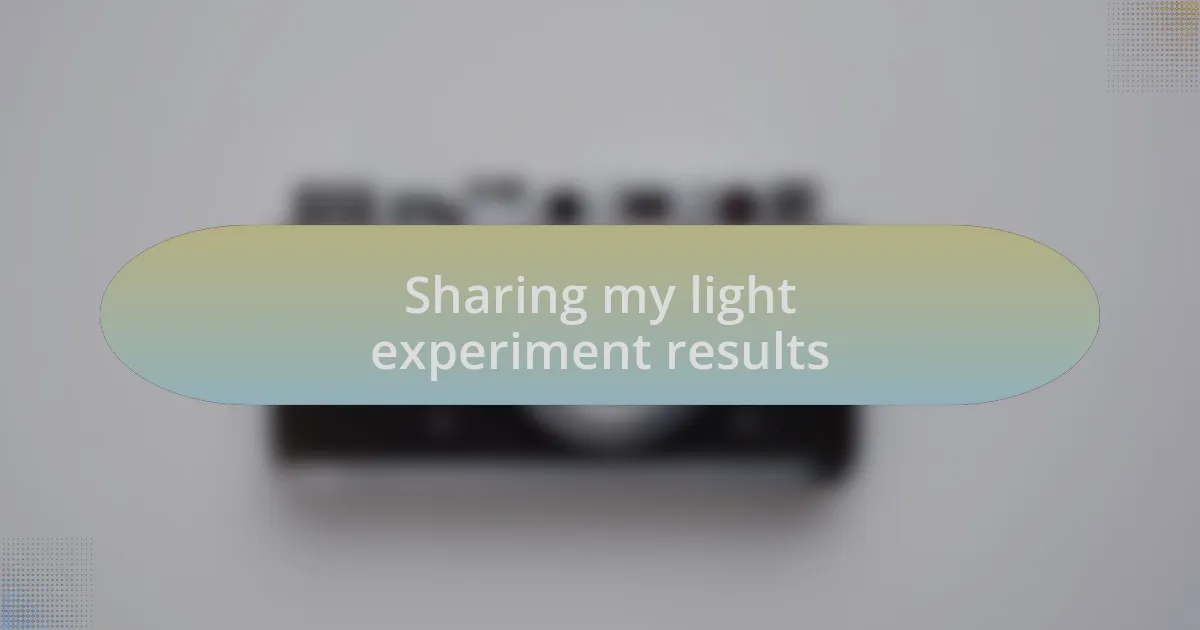
Sharing my light experiment results
Sharing my results from recent light experiments has been quite enlightening. Just last week, I played with colored gels on my speedlight. The moment I projected vibrant red and blue hues onto my backdrop, the entire vibe of the scene shifted. I remember grinning in disbelief at the dramatic impact of those simple colors—how often do we underestimate the power of color in our photography?
During my latest shoot, I had an opportunity to test natural lighting in a completely new way. I positioned my subject next to an oversized window at just the right angle. As the late afternoon sun streamed through, it created beautiful rim lighting that emphasized their silhouette. I still get a rush thinking about how the interplay of light and shadow brought an unexpected depth to the image. Doesn’t it feel rewarding when nature provides such perfect lighting?
Reflecting on past experiments, one that stands out involved using a flashlight to create dynamic shadows. I recall that night vividly; each angle I tried produced a new abstract quality that transformed ordinary objects into compelling focal points. As I reviewed the shots, I felt a sense of excitement—have you ever discovered a technique that felt like unlocking a secret? It’s those moments of discovery that keep me passionate about my craft.